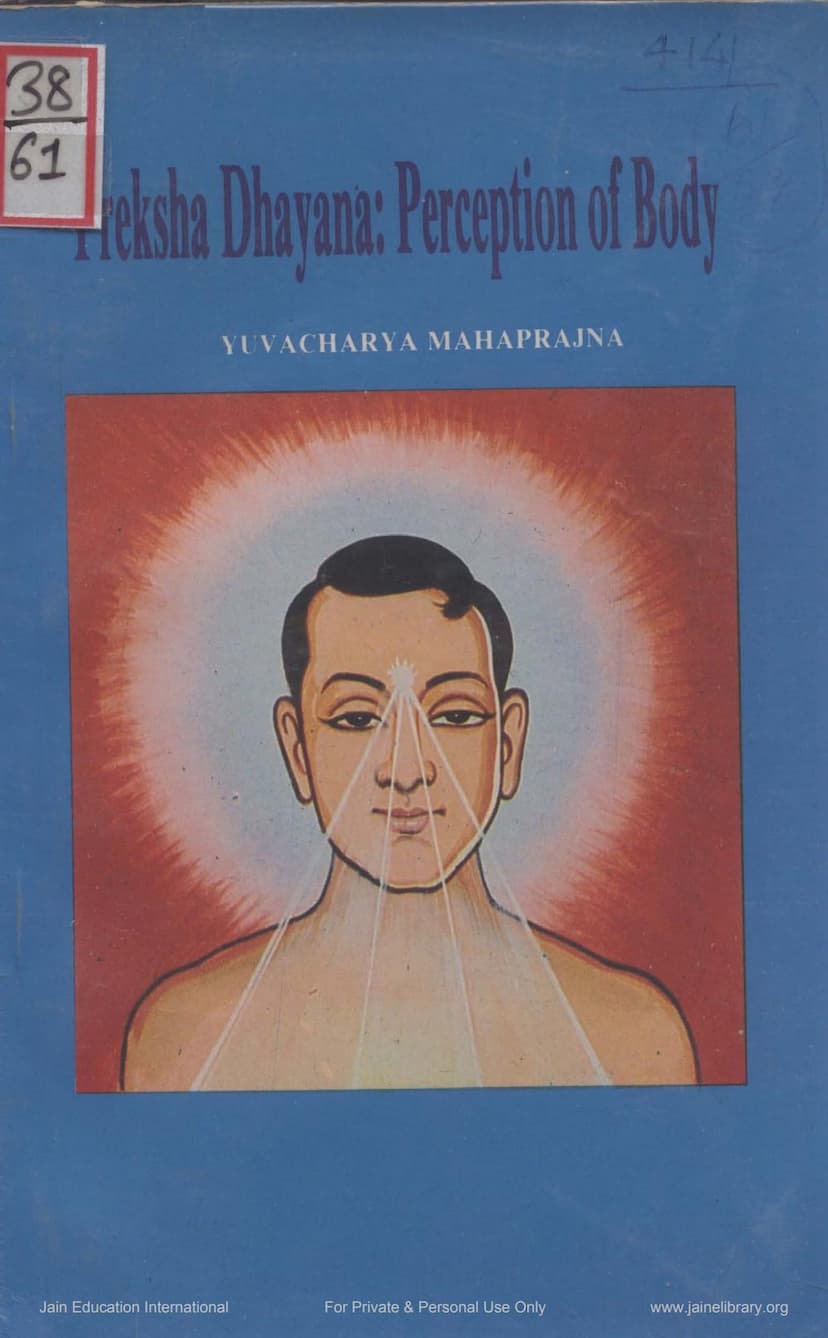Preksha Dhyana Perception Of Body
Added to library: September 2, 2025

Summary
Here's a comprehensive summary of "Preksha Dhyana: Perception of Body" by Mahapragna Acharya:
This book, part of the "Science of Living" series, introduces Sarīra-prekşā (Perception of Body), a core technique within Preksha Dhyana, a Jain meditative practice. The primary aim of this booklet is to guide individuals towards a deeper understanding and awareness of their physical body as a crucial medium for spiritual advancement and overall well-being.
Context and Purpose: In an age of stress and psychosomatic diseases, Preksha Dhyana offers a holistic approach to life by integrating ancient wisdom with modern scientific understanding. It aims to foster attitudinal change, behavioral modification, and integrated personality development. Sarīra-prekşā, specifically, helps individuals reconnect with their inner selves and regain self-awareness, which is often lost in the hustle of modern life.
The Body: Scientific and Philosophical Perspectives: The book first presents a scientific overview of the human body, detailing its fundamental units (cells), tissues, organs, and major systems:
- Nervous System: Its complexity, role in coordination, and divisions (CNS and PNS) are explained, highlighting its function in processing information, regulating movement, and controlling emotions.
- Circulatory System: The heart as a pump, blood vessels, and the vital role of blood in transporting nutrients and oxygen are described.
- Respiratory System: The process of breathing, gas exchange in the lungs, and the muscles involved are outlined.
- Digestive System: The journey of food through the alimentary tract and the functions of accessory organs like the liver and pancreas are detailed.
- Endocrine System: The role of various glands (pineal, pituitary, thyroid, adrenals, etc.) in regulating bodily functions through hormones is discussed.
- Urinary System: The kidneys' function in waste elimination and maintaining bodily balance is explained.
Beyond the purely physical, the book delves into the philosophical version of the body, introducing the concept of Prāņadhārā (Flow of Vital Energy). It suggests that this subtle life-force, often associated with bio-electricity or electromagnetic force, is not fully understood by modern medicine but is central to spiritual masters. The interplay of Ida, Pingala, and Sushumna nadis (channels) and their impact on physiological and psychological states is touched upon. The book emphasizes that true understanding of the body requires acknowledging these subtle energies.
The Raison d'être of Body Perception: The core principle is to "see thyself by thyself," meaning to perceive deeper levels of consciousness through one's own conscious mind. The body is presented as the initial object of perception, but it is also recognized as being imbued with consciousness and vital energy. The book asserts that the body is the fundamental tool for spiritual progress, enabling breathing, speech, and thought. It stresses the principality of the body as the integrating organism that coordinates these functions.
The Process of Self-Awareness: Sarīra-prekşā is presented as the key to self-awareness and self-realization. It's not merely "looking" at the body but a technique that involves focusing attention on each part, penetrating inwards, and becoming aware of the internal phenomena. The book highlights that most bodily functions are automatic and often go unnoticed. Sarīra-prekşā aims to de-automatize these processes, sharpening the instrument of perception to become aware of the vast internal activity, including chemical reactions, electrical impulses, and the flow of vital energy. This process is described as a journey from the gross to the subtle, eventually leading to the realization of the true self.
The Technique of Perception: The basic principle is to live fully in the present moment, being keenly aware of the body's sensations and internal workings. The process is centripetal, moving from the outermost layers (skin) inwards towards the core. It involves:
- From Gross to Subtle: Perceiving muscular movements, then internal organ sensations, followed by chemical reactions and electrical impulses, and finally the flow of vital energy.
- Sequence of Perception: Starting with superficial skin sensations, moving to muscular sensations, then internal organ functions, and finally subtle vibrations and vital energy flow.
- Pure Perception: Perceiving without the interference of thoughts, imagination, memory, or emotions (likes/dislikes). This leads to an impartial and transcendental outlook.
- Awareness of the Present Moment: Focusing intensely on the current biochemical processes, heartbeat, nerve impulses, and all metabolic activities.
Benefits of Sarīra-prekşā: The practice offers numerous benefits on multiple levels:
- Evenness of Vitality: Balances the flow of vital energy throughout the body, correcting imbalances that lead to illness. Conscious attention draws vital energy, leading to even distribution.
- Immunity: Enhances the body's natural defense mechanisms against disease.
- Health Improvement: Balances the sympathetic and parasympathetic nervous systems, allowing conscious control over automatic bodily functions like respiration, heart rate, and digestion. It addresses the root cause of illness by curing emotional and mental disturbances, which in turn resolves physical ailments.
- Vigilance: Increases awareness and the ability to remain active and awake, observing sensations neutrally without attachment or aversion.
- Swimming Upstream: Cultivates the ability to turn inwards and focus on the self, rather than being constantly drawn to external stimuli. This strengthens consciousness and resistance to external influences.
- Transmutation: Leads to immediate physical and mental changes, such as a feeling of lightness, tension relief, and enhanced well-being.
- Rejuvenation of the Body: Strengthens the will, purifies the body by enhancing the efficiency of excretory systems, improves blood circulation, normalizes blood pressure, optimizes digestive functions, and revitalizes the nervous system, thereby resolving mental and physical issues.
In essence, "Preksha Dhyana: Perception of Body" advocates for a profound and systematic exploration of one's own physical form. By consciously perceiving the intricate workings within, individuals can achieve greater self-awareness, emotional balance, physical health, and ultimately, spiritual liberation. The book encourages consistent practice under the guidance of trained teachers to unlock these transformative benefits.